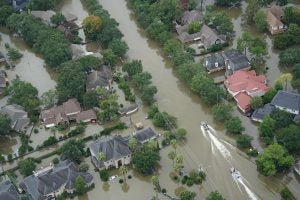Climate scientists agree: methane cuts are essential to limit global warming
A new report out this week from the Intergovernmental Panel on Climate Change is once again shedding more light on the climate crisis. According to the latest research, we’re on a dangerous trajectory that will result in significantly more warming than what policymakers aimed for.
As part of the Paris Climate Agreement — countries across the globe committed to try and limit future temperature rise to no more than 1.5 degrees Celsius. This new report not only predicts that we are not on track to meet that goal, it also suggests that even limiting warming to 2 degrees C is highly unlikely based on our current emissions and policies.
A previous IPCC assessment released earlier this year brought into focus the unfortunate reality that we are already experiencing increasingly destructive extreme weather events, rising seas, melting sea ice, habitat loss and other severe impacts of a changing climate at a much faster rate than communities can adapt. The fact that we are not acting fast enough to avert much worse impacts is disappointing news.
But there is hope to be had! While greenhouse gas emissions have continued to increase each decade, the speed at which they have risen has recently slowed down. This indicates that it is possible to reduce our greenhouse gas emissions. It’s now a matter of how much and how fast. This report focuses on solutions that we can and should be implementing across all sectors in order to set our climate goals on track, including decarbonizing our energy sources, improving energy efficiency, restoring ecosystems and many others.
One solution that can provide nearly instant relief is to reduce methane emissions. Methane is an extremely potent greenhouse gas. We don’t emit nearly as much methane as carbon dioxide, but what we do emit creates a lot of extra warming. Over the next two decades, today’s methane emissions will trap 80 times more heat than an equal amount of CO2. Most of the world’s methane comes from three major sources: cattle farming, landfills and oil and gas production and use. And the latter of the three provides a cheap and easy tool for fighting the climate crisis.
Methane is the main component of natural gas. When it escapes into the atmosphere, it not only adds to our climate problem but it also leads to lost energy. So limiting methane leakage from oil and gas development offers the dual benefit of both minimizing pollution and saving product. It’s one of the most affordable and immediately impactful climate solutions out there. According to the IPCC, anywhere between 50-80% of oil and gas methane emissions could be eliminated at relatively low cost with existing technologies and practices.
This could have an immediate impact on global warming. In fact, research has shown that if we act fast to apply all existing technologies to cut methane emissions from all sectors, we could slow the current rate of warming by up to 30%. This would have major benefits not just on temperature increases but also on other vital pieces of our climate system. Another recent study released just weeks ago found that quickly reducing methane emissions using all currently feasible technologies will play a major role in preserving Arctic summer sea ice if implemented now.
At the most recent international climate conference, over 100 countries made a pledge to reduce 30% of global methane emissions by 2030. This is a promising move, but this week’s news reminds us that we need to dial up our ambition. The fact is that we have the ability right now to eliminate about half of the world’s methane emissions with existing tools and technologies. And the next generation of methane detection technology – like methane-detecting satellites and 24-7 monitors – will allow us to make more reductions even faster.
It’s clear there is a window of opportunity to act on climate – but it’s narrowing fast. We must make massive cuts in methane and CO2 and continue our transition to cleaner, cheaper, reliable energy sources if we’re to avoid the most dire consequences of climate change.












